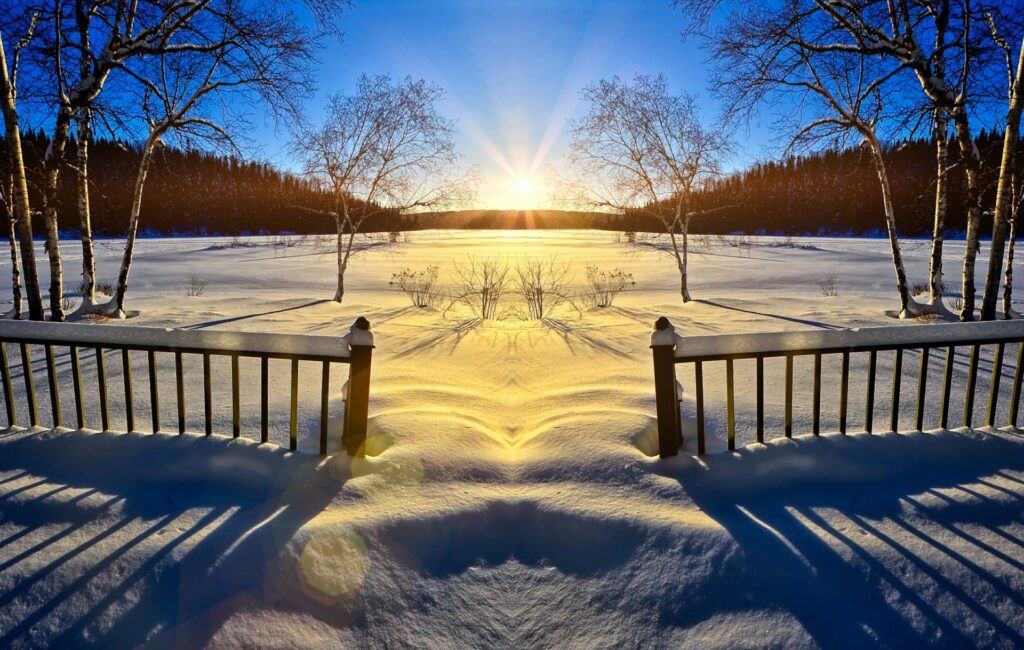Introduction
Hey there, future Solar Sleuth! 🕵️♀️☀️ Ever wondered why your solar-powered gadgets are buzzing with energy at high noon but mope around like a teenager deprived of Wi-Fi by dusk? Oh, you’ve got questions, and I’ve got answers. Get ready to wrap your head around the enigmatic yet super practical concept of Peak Sunlight Hours. But what are Peak Sunlight Hours? They’re the VIP tickets to the solar energy concert, the secret sauce to your energy-efficient life, and the hidden treasure map where X marks the sunniest spot.
Remember those days you decided to sunbathe but ended up looking more like a boiled lobster than golden god(dess)? Or those times when your solar garden lights gave up the ghost right when you needed to impress your date? It’s like the sun is playing some celestial game of hide-and-seek with you. Well, the game’s over because understanding Peak Sunlight Hours is like having the cheat code to the universe’s sunniest video game.

Intrigued? You should be! So stick around as we embark on this illuminating journey. We’re about to dive into a sunlit rabbit hole that’s brighter than your Aunt Karen’s highlighter at a family reunion. We’re talking the real deal here, the difference between wondering why your solar gizmos are failing you and basking (quite literally) in the glory of the sun’s most generous hours.
But first, what are peak sunlight hours exactly? Put on your shades, grab a cool drink, and let’s get you up to speed on what they are and how Peak Sunlight Hours can literally and figuratively brighten your day. 🌞😎
Funny Story Alert: I once tried to host a “solar-powered movie night” in my backyard. Figured, “Hey, the sun’s out for like 14 hours, this should be easy-peasy!” Let’s just say, we got halfway through “The Lion King” before the projector sputtered out. I learned the hard way that not all sunlight hours are “peak,” okay? Don’t be like me. Understand your Peak Sunlight Hours!
Why Should You Even Care About Peak Sunlight Hours?
Ah, the million-dollar question, or should I say, the million-sunray question: Why should you give a solar hoot about Peak Sunlight Hours? Well, imagine you’re a chef—but instead of knives and spatulas, you’re working with solar panels and photovoltaic cells. Knowing your Peak Sunlight Hours is like knowing exactly when your ingredients are at their freshest and most flavorful. You wouldn’t make a five-star meal with wilted veggies, would you?
You’ll Save Money: First off, let’s talk about the bling-bling. If you’re using solar panels to power your home or gadgets, Peak Sunlight Hours can be the difference between a budget surplus and a cash black hole. During those prime sunshine moments, you’re getting maximum efficiency from your solar setup. More efficiency means fewer panels and less expense. We’re talking about rolling in the green, both environmentally and financially!
Boost Efficiency: Speaking of efficiency, that’s another major win. Whether it’s charging your electric car or running your fancy solar-powered bird bath (hey, even the sparrows like a good spa day), you’re going to get the most bang for your buck during those Peak Sunlight Hours. It’s like hitting the jackpot in a solar casino!
Optimized Outdoor Activities: Love gardening or outdoor photography? Well, Peak Sunlight Hours are your best friend! The sun’s rays are strongest and most direct during these times, giving your tomatoes that extra blush and your photos that Instagram-worthy glow. Plus, your solar outdoor lights will soak up enough energy to keep your garden lit like a Christmas tree all night long.
Become a Solar Genius: Knowledge is power—literally, in this case. The more you understand about Peak Sunlight Hours, the more you can game the system. Plan your energy-intensive activities when the sun is at its mightiest, and you’ll be the neighborhood’s solar Einstein. Why follow the sun when you can make the sun follow you?
So there you have it, folks. Peak Sunlight Hours aren’t just some jargon to impress your nerdy friends. They’re the keys to a greener, more efficient, and dare I say, brighter life. Ignoring them would be like refusing to use the cheat codes in a video game. And who wants to play on hard mode all the time? 🌞💡
The Intricacies of Peak Sunlight Hours
Decoding Solar Irradiance
Alright, strap in, because we’re about to tackle Solar Irradiance—sounds like a spell from “Harry Potter,” doesn’t it? But no, it’s not a magic spell; it’s scientific gold if you’re into the solar scene. Solar Irradiance basically measures the oomph of solar energy hitting a square meter of Earth’s surface per second. Think of it as the sunlight’s horsepower or the power level of your own personal sunbeam Dragon Ball Z-style. Over 9000? Nah, but it’s still pretty cool.
Solar Irradiance varies throughout the day, much like your mood before and after coffee. It’s usually highest around noon when the sun is directly overhead. This is often smack-dab in the middle of the Peak Sunlight Hours. It’s like the sun’s grand solo in the daytime opera, belting out its strongest rays for all the world—or at least your solar panels—to soak up.
Why is this important? Because high Solar Irradiance equates to more efficient solar energy conversion. It’s the difference between a trickle-charging USB port and a fast-charging power outlet. In a nutshell, the higher the irradiance, the faster your solar cells convert sunlight into usable energy. It’s your cheat code to raking in more solar bucks and bragging rights in your eco-friendly community. 🌞🔋

Latitude’s Role in Peak Sunlight Hours
So you thought latitude was just for globe-trotters and lost pirates navigating the high seas? Think again, me hearties! Latitude plays a starring role in determining your Peak Sunlight Hours. Imagine the Earth as a big ol’ spinning basketball—sorry, Flat Earthers, you can sit this one out. The closer you are to the equator (0° latitude), the more you’ll get drenched in sunbeams like you’re in a solar sauna.
At the equator, the sun takes a pretty direct path across the sky, delivering a generous amount of Peak Sunlight Hours. It’s like living in a solar VIP lounge—everybody gets a front-row seat to the sun! But as you move toward the poles, that path becomes slanted. It’s a bit like the sun doing the limbo dance under a bar; it’s still there, but it’s not as “in your face.” Consequently, Peak Sunlight Hours can be as scarce as hen’s teeth at higher latitudes, especially during winter.
Why should you care? Well, if you’re living in Anchorage, Alaska, your solar panels will be sipping sunlight like it’s a rare vintage wine, not guzzling it like it’s happy hour at the equator. Understanding latitude’s role helps you plan better, whether it’s for solar panel installations or sun-dependent activities like farming. So don’t overlook latitude; it’s not just a line on a map—it’s the director of your solar symphony! 🌍☀️
Seasonal Variations
Ah, the four seasons—no, not the hotel chain or the musical quartet, but winter, spring, summer, and fall. While we all look forward to beach trips in summer and cozy firesides in winter, your solar panels are having their own seasonal flings with Peak Sunlight Hours. It’s like “The Bachelor” but for solar energy, where every season brings new drama.
During summer, Peak Sunlight Hours are like a party that starts early and goes on till late. The sun is up and about, giving your solar panels a smorgasbord of light to feast on. It’s the solar version of an all-you-can-eat buffet, and trust me, your solar panels are stuffing their faces.
However, winter is a whole different ball game. The sun turns into a bit of a recluse, rising late and tucking itself in early like it’s binge-watching Netflix shows. Your Peak Sunlight Hours shrink faster than your favorite jeans in a hot wash, making each solar minute precious. In winter, you’ve got to be the solar equivalent of a squirrel storing nuts: make the most of what you’ve got when you’ve got it.
If you’re contemplating anything solar-powered, you’ve got to account for these seasonal changes. A solar garden in winter might look more like a lunar landscape if you’re not careful. So set your solar watches, folks, because time—and sunlight—waits for no one!
Weather and Its Whims
Ah, weather—the ultimate conversation starter and the perpetual wrench in many a well-laid plan, including your Peak Sunlight Hours. It’s like that unpredictable friend who either shows up fashionably late or crashes your party two hours early. You love ’em, but you can’t count on them to be consistent.
Cloud Cover: A cloudy day is to Peak Sunlight Hours what a pillow is to an alarm clock. Sure, the sound (or in this case, the light) gets through, but it’s muffled and way less effective. On cloudy days, your solar panels are basically yawning, stretching, and politely asking for “five more minutes” of sunlight.
Rain and Storms: Oh, the drama of a thunderstorm! While it’s great for mood lighting and suspenseful novels, it’s the arch-nemesis of Peak Sunlight Hours. Your solar panels will be sadder than a wet cat, catching mere droplets of solar energy in between rain showers.
Snowfall: Think snow is reflective and could boost your solar game? Think again! A layer of snow can act like a cozy blanket over your solar panels, making them hibernate until someone (probably you) dusts them off. Snow-covered panels are about as useful as a screen door on a submarine.
Smog and Air Pollution: Believe it or not, even smog has a say in your solar yield. Air pollution can scatter sunlight, diluting its strength by the time it reaches your solar cells. It’s like trying to sip a milkshake through a swizzle stick—frustratingly slow and not very satisfying.
So, in the world of solar energy, weather plays a role that’s as pivotal as a plot twist in a telenovela. But fear not! With a bit of planning and maybe a weather app or two, you can still wring some respectable Peak Sunlight Hours out of even the most fickle skies.
Practical Applications of Knowing Peak Sunlight Hours
Boost Your Solar Panel Efficiency
So, you wouldn’t run a marathon without training, right? I mean, unless you’re an adrenaline junkie who loves muscle cramps and passing out before the finish line. The same principle applies to your solar panels when it comes to optimizing for Peak Sunlight Hours. A solar panel without preparation is like a runner without a warm-up—destined for subpar performance and maybe even a trip to the repair shop, or in a runner’s case, the emergency room.
Adjust Those Angles: Picture this—you’re sunbathing, but you’re lying in a way that only the soles of your feet catch the sun. Not very effective, huh? It’s the same with solar panels. You’ve got to adjust their angles seasonally to ensure they’re face-to-face with the glorious sun. Imagine the rays coming down like a spotlight; you want that panel to be center stage, basking in the limelight!
Cleanliness Is Godliness: A dirty solar panel is like an athlete with a twisted ankle; it’s not going to perform well. Dust, bird droppings, and leaves can act as a barrier between the panel and those precious Peak Sunlight Hours. So get up there and give those panels a good scrubbing. They’re competing in the Solar Olympics, after all!
By taking these steps, you’re not just dabbling in solar energy; you’re committing to a solar lifestyle optimized for Peak Sunlight Hours. You’re like the coach pushing your solar panels to achieve their personal bests. So grab that whistle, put on your most inspirational coaching face, and watch your solar panel efficiency soar. On your marks, get set, go solar! 🏃♀️🌞🏃♂️
Be the Sage of Sunlit Gardening
Why is my basil plant looking like it’s seen better days? If your basil plant looks like it’s auditioning for a role in a plant horror movie, chances are it’s not getting the right amount of sunlight. Basil is a sun-loving herb that thrives in 6 to 8 hours of direct sunlight, preferably during Peak Sunlight Hours when the sun’s rays are most potent. If your basil is stuck in a shady spot or if you’ve been keeping it indoors away from natural light, it’s not going to be a happy camper. The lack of sufficient sunlight can lead to weak stems, pale leaves, and reduced flavor. So, if you want to see your basil flourish, make sure it gets its daily dose of sun during those optimal hours. It’s like giving your plant a vitamin D supplement, but way more natural!
Planning Outdoor Activities
planning a beach day or a BBQ without considering Peak Sunlight Hours is like throwing a party and forgetting the music—yeah, you’ll still have fun, but something crucial will be missing. Peak Sunlight Hours refer to the time of day when the sun’s rays are at their most intense. These are the golden hours for soaking up that vitamin D, getting a tan, or cooking those burger patties to perfection on a solar grill.
Imagine packing your sunscreen, frisbees, and those barely-used beach towels for a day of fun, only to find the sun playing peekaboo behind clouds. Or firing up the BBQ when the sun’s intensity is as weak as watered-down lemonade. Not fun, right?
So, if you want to be the MVP of outdoor planning, get familiar with Peak Sunlight Hours in your area. This way, you’ll maximize fun and minimize the risk of sunburn or undercooked sausages. It’s like having a cheat sheet for Mother Nature’s moods, ensuring your outdoor shenanigans are always lit—literally!
Calculating Peak Sunlight Hours Like a Pro
Must-Have Tools
All you need is an insolation meter and a spirit for adventure. This isn’t rocket science—well, actually, it’s solar science, but who’s counting?
Step-by-Step Calculation Guide
- Unbox that insolation meter.
- Point it up. Yeah, towards the big shiny thing in the sky.
- Jot down the numbers.
Peak Sunlight Hours: A Global Perspective
You’ve probably heard people throwing around the term “Peak Sunlight Hours,” but do you really know what it means—and more importantly, how it varies around this beautiful globe of ours? Stick around; this is a journey that’s brighter than the sequin pants at a disco!
Countries Basking in Sunlight
Ever wondered what Australia’s kangaroos and Peak Sunlight Hours have in common? Both are abundant down under! Yep, Australia’s not just for koalas and surfers; it’s a sun-drenched paradise that has solar panels performing their happy dance every day. Due to its favorable latitude and generous sunbeams, Australia hits the solar jackpot with an average of 5 to 6 Peak Sunlight Hours daily. That’s enough to make your solar garden gnome throw a dance party!
Climate’s Role in Shaping Peak Sunlight Hours
Now, let’s talk about a place that’s not winning any solar awards—Seattle. Oh, Seattle, the city of Grunge, Microsoft, and Starbucks. People love your lattes and tech innovation, but when it comes to Peak Sunlight Hours, you’re serving us decaf, my friend. Seattle’s climate has a penchant for cloudiness, rain, and, well, more cloudiness. If solar panels had feelings, they’d be writing angsty poetry here. The city averages around 3 to 4 Peak Sunlight Hours, which is not terrible but certainly not on par with our sunny superstars like Australia.
Myths and Misconceptions
Ah, myths. They’re what make us believe in unicorns, think we can “sweat out toxins,” and convince us that a chocolate diet is a great idea (ok, that last one might just be wishful thinking). But when it comes to Peak Sunlight Hours, myths can be more than just entertaining—they can be downright misleading. Let’s set the record straight, shall we?
Debunking the ‘More Sun = More Power’ Myth
Listen up, Solar Sally and Solar Sam. You might think that the more the sun’s out, the better it is for your solar energy setup. It’s a common misconception, but let me tell you—this is as wrong as pineapple on pizza (don’t @ me). You see, not all sunlight hours are created equal. A solar panel isn’t a grade-school kid; it doesn’t get more points for participation. What really matters are the Peak Sunlight Hours, those juicy slices of the day when the sun is at its strongest. So don’t just count the hours, make the hours count! Yes, I said it. Quality over quantity, my radiant readers!
The Dawn and Dusk Delusion
“Early bird catches the worm,” they say. Well, let me tell you, if your solar panels are the birds, they’re not catching much in those twilight hours. Sure, dawn and dusk might give you Instagram-worthy skies, but they’re not going to give you peak solar energy. So, if you’re thinking those beautiful “golden” hours are golden for your solar panels, think again. It’s like expecting to win a marathon by sprinting the first 100 meters. Spoiler: you won’t. These times of day offer softer, diffused light, and your solar panels are pretty much like, “Meh, I’ll pass.”
So, let’s chuck these myths into the same bin we put the idea that the Earth is flat or that eating carrots will give you night vision. Peak Sunlight Hours are the superstar MVPs you need to focus on if you’re serious about solar energy. And let’s be honest, if you’ve read this far, you’re as serious as a cat chasing a laser point—completely focused but still having fun!
Expert Tips for Maximizing Peak Sunlight Hours
Alright, so you’ve made it through the labyrinth of myths and misconceptions. You’re almost as enlightened as a monk on a mountain top, but how do you put all this newfound wisdom to work? Fret not, for we’ve got some pro-level tips to help you bask in all the Peak Sunlight Hours you can handle. Let’s get those solar panels from “meh” to “yay!”
Optimal Solar Panel Angling
Think of your solar panel as a sunflower. What does a sunflower do best? That’s right—it faces the sun! So let’s talk angles, shall we? If your solar panels are lounging flat on their backs, they’re basically the sloths of the solar world. But a slight tilt can turn them into the Usain Bolts of energy conversion. Research shows that angling your solar panels to match your latitude can substantially boost their efficiency. So, if you’re in Seattle, don’t despair—tilt those panels like they’re Leaning Towers of Pisa and watch the electrons flow!
Seasonal Adjustment Strategies
No, I’m not talking about seasonal affective disorder; I’m talking about giving your solar panels a summer and winter wardrobe! Just like you wouldn’t wear a parka to the beach or flip-flops in a snowstorm, your solar panels need to dress for the occasion—or rather, tilt for it. During the summer, when the sun is higher in the sky, tilt those bad boys at a lesser angle. Come winter, crank up the tilt to capture the lower-hanging sun. This is the equivalent of your solar panels doing a quick Superman-style wardrobe change but for maximum energy capture.
Now, you’re not just an average Joe or Jane bumbling around with solar panels. You’re a savvy, Peak Sunlight Hour-maximizing machine, ready to turn every sunbeam into a jolt of pure, sustainable energy. So go ahead, angle those panels, adjust them seasonally, and make your solar dreams come true. Just imagine the bragging rights at the next BBQ: “You grilled your burgers with propane? Hah! I used the power of the sun!” 🌞
In Summary: The Ultimate Guide to Peak Sunlight Hours
So there you have it, the complete 411 on Peak Sunlight Hours. Don’t underestimate the power of the sun—well, do, but only at certain hours. So go out, adjust those solar panels, and plan your day like the sun-savvy genius you’ve become.
Frequently Asked Questions About Peak Sunlight Hours
- Why are Peak Sunlight Hours important? Because unless you love wasting time and energy, you need to sync with the sun.
- How do I calculate my local Peak Sunlight Hours? Get yourself an insolation meter. Or borrow one. Or maybe make a sundial? Just kidding, get the meter.
- Does weather affect Peak Sunlight Hours? Oh, you betcha! Clouds are the party poopers of Peak Sunlight Hours.
- Can I use Peak Sunlight Hours to improve gardening? Yes, and your tomatoes will throw you a thank-you party.
- What if I live in an area with low Peak Sunlight Hours? Invest in good storage batteries, or maybe consider moving. Just saying.




